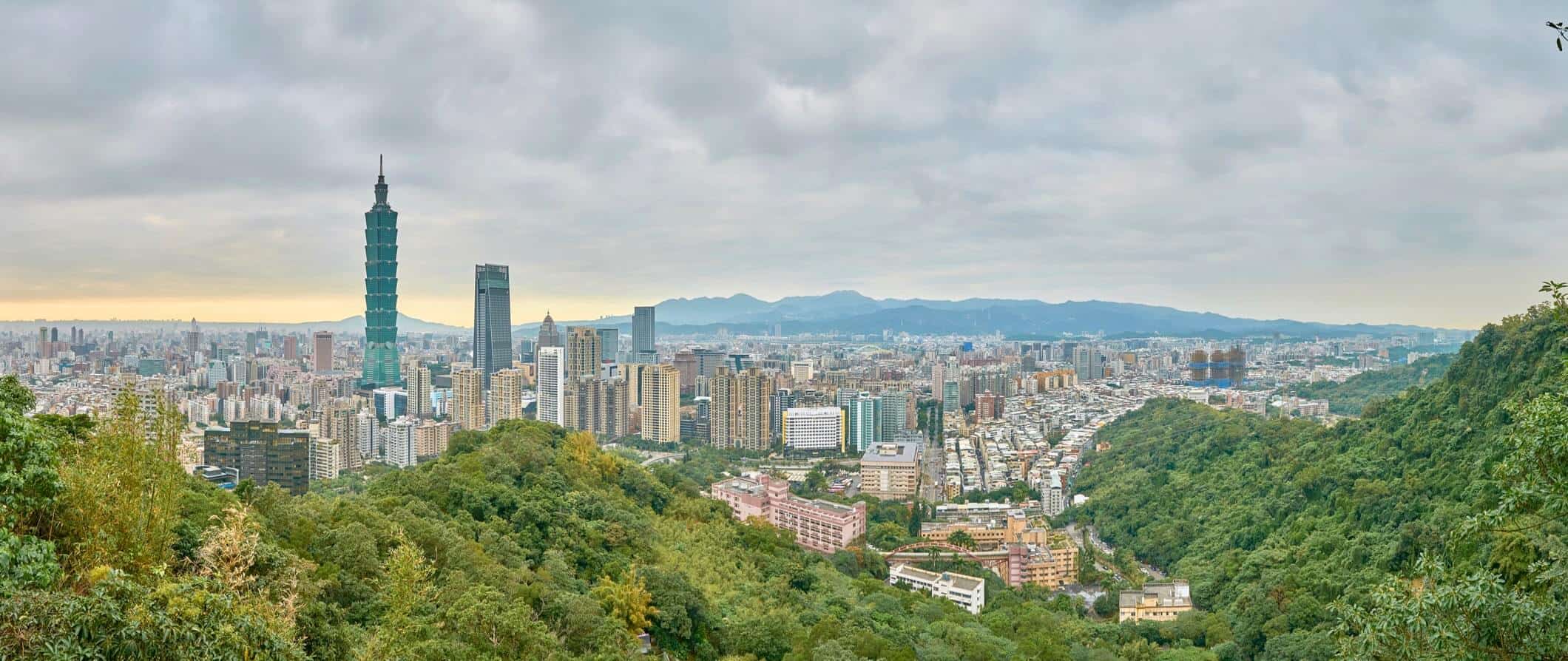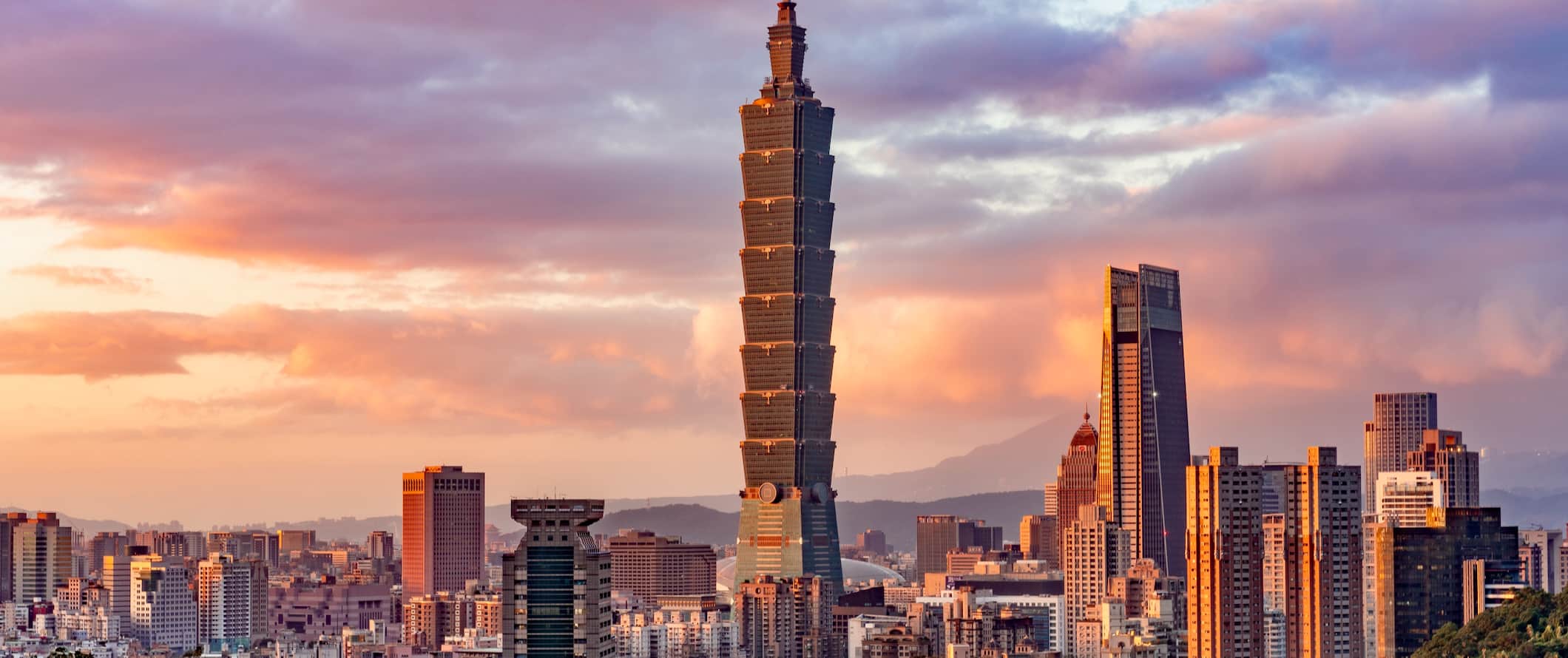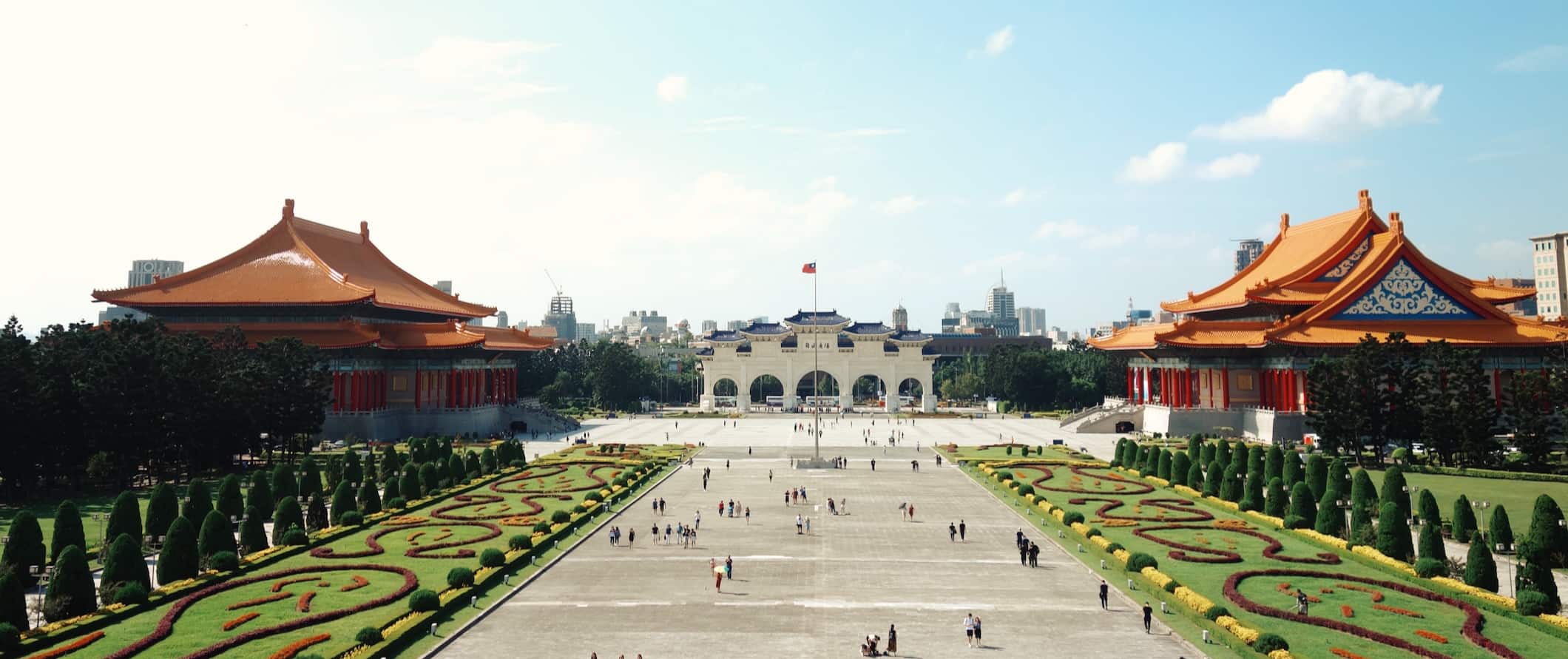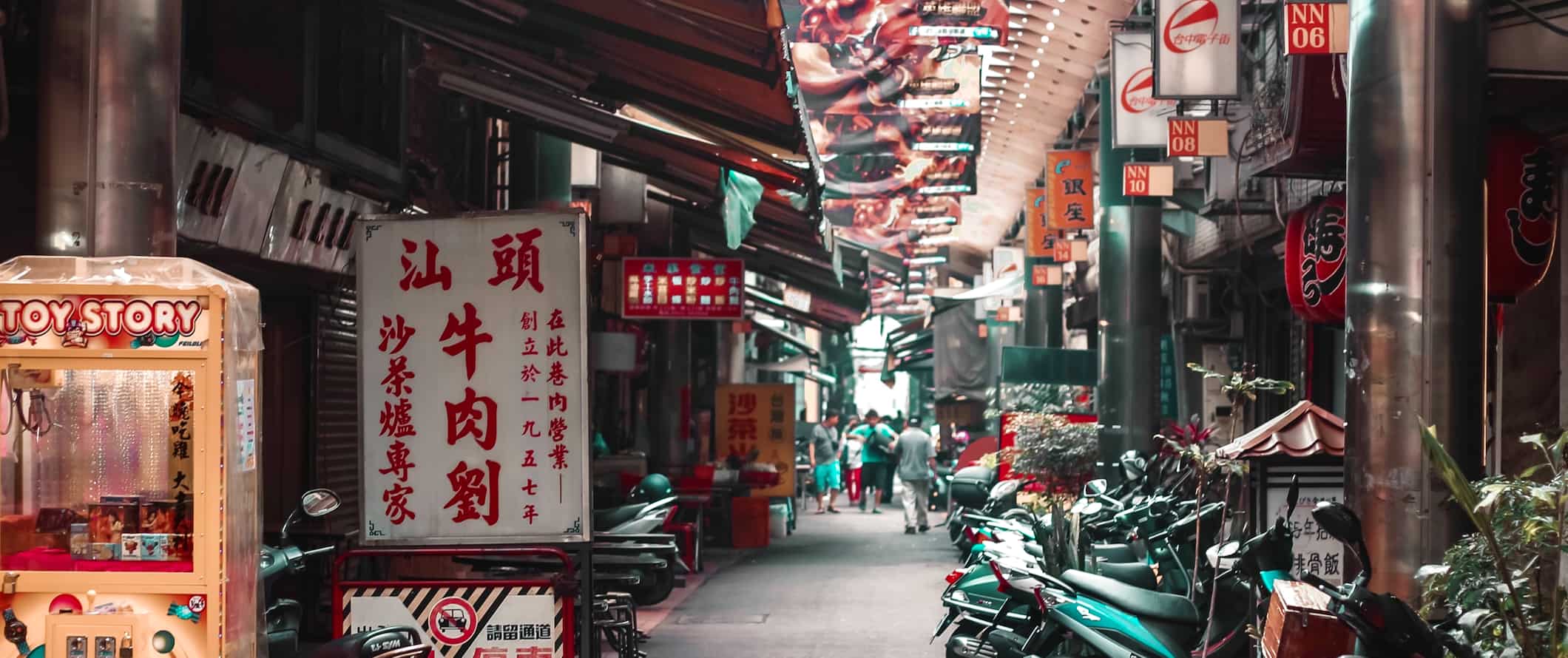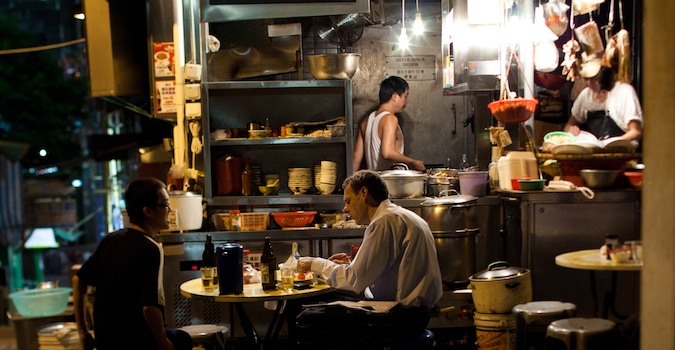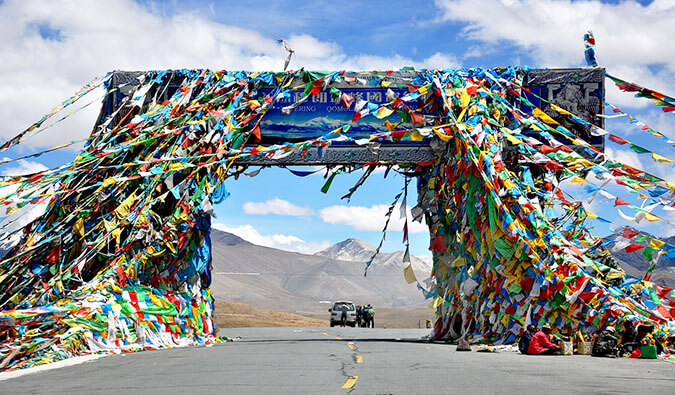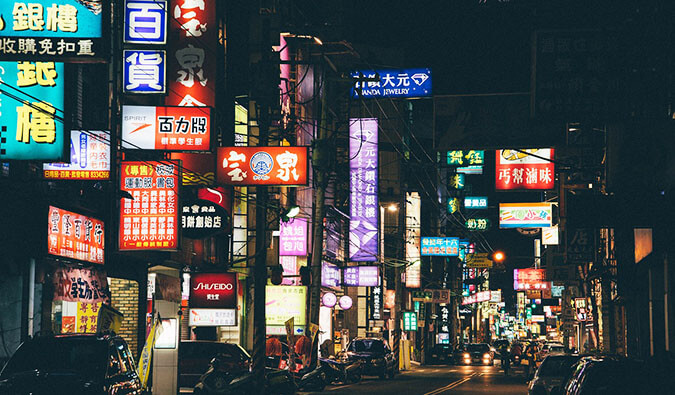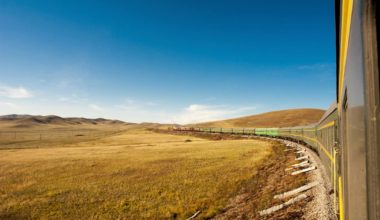Taiwan is one of the most underrated budget destinations in Asia. It offers a beautiful — and super affordable — mix of east and west, blending the culture and cuisines of mainland China, Japan, and Hong Kong. And all with a fraction of the crowds.
I don’t think enough people visit Taiwan. I spent time here as an English teacher and have revisited the country since. There is a lot to do there: hiking the mountains, eating at night markets, drinking at tea houses, lounging on beaches, and enjoying the country’s amazing nightlife. No matter your interests, Taiwan won’t disappoint — especially if you’re a foodie. The food here is some of the best in the region!
This travel guide to Taiwan can help you plan your trip, save money, and make the most of your visit to this underrated island!
Table of Contents
Top 5 Things to See and Do in Taiwan
1. Visit Jiufen
Jiufen is one of Taiwan’s most popular tourist destinations. Founded during the Qing dynasty, Jiufen boomed as a gold mining town in the 1890s. Here, you can find all kinds of historic tea houses built into the hillside. The center of the city and its historic streets and buildings are all preserved and look as they did 100 years ago. Try the snacks on offer, visit one of the many tea houses, and do some hiking if you have time. It’s a pretty easy day trip from Taipei but you should aim to come early to beat the crowds. If your itinerary allows for it, consider spending a night here so you can experience it without the daytripper crowds.
2. Soak in the Hot Springs
Especially fun to visit in winter, the Beitou Hot Springs are just 30 minutes from downtown Taipei and you can get there on the MRT (you need to go to Xinbeitou station). There are lots of resorts, spas, and inns in the area which, with a vast array of wildlife and fauna, really feel like you’ve traveled much further afield. Visit the Hot Springs Museum, the Xinbeitou Historic Station, and Thermal Valley (a sulfurous lake nearby that has walking trails) while you’re here. There are also some really cool temples here, including the tiny wooden Puji Temple.
3. Explore Taroko National Park
Located southeast of Taipei, this national park offers visitors a chance to hike through beautiful mountainous terrain and gorges. It spans almost 250,000 acres and is one of only nine national parks in Taiwan. With loads of cliffs and waterfalls to explore, it’s a really stunning place to visit. Head to the Zhuilu Suspension Bridge for some amazing views and to the Eternal Spring Shrine or to the Changing Temple for a bit of culture and history. Some suggested walking trails include Shakadang, Changchun, Swallow Grotto, and Lushui-Heliu. Entrance to the park is free.
4. Visit Taipei 101
Formerly known as Taipei World Trade Center, this was the tallest building in the world from when it opened in 2004 until 2010 (when the Burj Khalifa took its place). Standing 508-meters (1,667-feet) tall, it towers over Taipei. There is an observation platform on the 89th floor (at 382-meters high). You can also go up to the 91st floor for an outdoor platform. If you’re needing some retail therapy (and can fit anything else in your bags), there’s a shopping mall at the bottom.
5. Explore the night markets
Taipei is home to dozens of night markets. Shulin Night Market, Raohe Night Market, Tonghua Night Market, Snake Alley, and Ningxia Night Market are all worth spending some time exploring but there are over 30 to choose from in Taipei alone. The food at these markets is the best (and cheapest) in the city. So much so that a few have even been given Michelin Bib Gourmands!
Other Things to See and Do in Taiwan
1. Visit Taipei
Taipei is the epicenter of the country. Here there are sprawling food markets, a wild nightlife, spacious parks, and all kinds of interesting and quirky museums. Plus, the nearby mountains are full of easy and accessible hikes. Be sure to take a free walking tour, visit the National Palace Museum, see some temples (especially Confucius Temple and Bao-an Temple), and visit the Chiang Kai-shek Memorial Hall. I can’t sing the praises of this city highly enough (I lived here when I taught English). For even more on the city, here’s my full list of things to do in Taipei!
2. Go island hopping
The Pescadores Islands (known locally as Penghu) is an archipelago off the west coast between Taiwan and China. There are 90 islands in the region, perfect for exploring on a day trip. You can take a boat tour that visits several islands in the region, allowing you to snorkel, see sea turtles, and wander through traditional aboriginal villages and explore temples galore. Expect to pay around 1,500 TWD for a one-day multi-island tour.
3. See Tianhou Temple
Located in Taipei, this is one of the oldest temples in the city. Tianhou (also known as Mazu Temple, after the deity Mazu, goddess of the sea) was built in 1746 and is one of three major temples in Taiwan from the Qing period. It’s a beautiful Taoist temple filled with mythological creatures, incense, lucky goldfish, and people paying respect to the gods. Admission is free.
4. Hit the beach
The beaches of Kenting on the southern tip of the island are the best place to enjoy the summer weather. White Sand Bay is the most popular beach and a great place to swim, snorkel, and soak up the sun. Other beaches worth checking out are Fulong Beach, South Bay, Dawan Beach, Laomei Beach, and Little Bali Bay.
5. See the Lantern Festival
The famous Taiwan Lantern Festival is held every February/March and involves releasing hundreds of paper lanterns into the sky. There’s also a huge parade with floats, most of which relate to the year’s animal (from the Chinese zodiac). Thousands of people gather to watch and take part. To ensure the environment is protected, make sure you use a biodegradable eco-friendly lantern.
6. Hike Jade Mountain
Jade Mountain (also known as Yushan), the highest peak in Taiwan and East Asia with its peak at almost 4,000 meters above sea level, is a popular hike. If you don’t hike, there’s a special train that takes you to the peak before dawn (150 TWD). Most people do the hike over a couple of days, however, you can do it in a single day if you wake up super early and hike but that will mean over 10 hours of hiking. You’ll also need permits in advance so talk to your hotel or hostel staff as they can help you arrange those.
7. Tour Fo Guang Shan Monastery
This Zen monastery in Kaohsiung is a massive complex with eight towering pagodas that flank the monastery’s Big Buddha (which, at 36-meters tall, is the highest seated bronze Buddha in the world). Built in 1967 and spanning over 74 acres, the complex has a spacious outdoor walkway lined by manicured gardens as well as the huge pagodas. There are also over 14,000 statues of the Buddha here. Admission is free (donations are welcome) and there’s a delicious vegetarian restaurant inside with a huge buffet.
8. Visit the National Palace Museum
This museum, located in Taipei, has a collection of over 70,000 artifacts from Imperial China. Most of the collection was brought to Taiwan during the Chinese Civil War (1929–1947). In addition to their permanent exhibits, there are also rotating exhibits throughout the year as well as a section for children. There are free daily tours in English as well as a detailed audio guide if you’d rather explore yourself. Admission is 350 TWD.
9. See the Chiang Kai-shek Memorial Hall
Officially known as Liberty Square, this national monument was built in 1976 in honor of Chiang Kai-shek, former president of the Republic of China. He ruled mainland China from 1928 to 1949, and then in Taiwan from 1949 until his death in 1975. The memorial also houses a library and a museum that documents Chiang Kai-shek’s life and career. Tours in English are available daily but must be booked in advance. Admission is free.
10. Take a cooking class
Taiwan is a foodie’s dream and I always overindulge while I’m here. Noodle soups, incredible rice dishes, amazing buns, dumplings, and scallion pancakes are just some of the tasty local offerings. While cooking classes here are a little pricey, I think they are worth it if you really want to learn about the food. The cooking skills (and recipes) make a great souvenir to take home too. Expect to pay around 2,000 TWD for a class.
11. Go hiking
Taipei has plenty of hiking trails just outside town that are easily accessible. There are easy, moderate, and challenging trails, as well as both short and full-day hikes. Some suggested trails to check out are Xiangshan (easy, 45minutes), Bitoujiao (moderate, 2-3 hours), Jinmianshan (easy, 1.5 hours), Huang Didian (hard, 5 hours), and Pingxi Crag (moderate, 2-3 hours).
12. Visit Orchid Island
Located 64 kilometers (40 miles) off the southeastern coast, this lush, volcanic island offers hiking, swimming, diving, and amazing hot springs. There are also underground houses here, built to avoid the numerous typhoons that ravage the region. The island is home to only 5,000 people too. Visit the Lanyu Flying Fish Cultural Museum to learn about local culture. Flights from Taipei take just over an hour and cost around 4,500 TWD.
13. Hike Wuling Peak
For more hiking, head to Wuling Peak on Hehuan Mountain. Located in Central Taiwan, it stands 3,275 meters (10,744 feet) above sea level and makes for a good day trip for anyone looking to spend more time outdoors. The peak here is so high you can actually look down into a sea of clouds below. A round-trip hike takes around 2-3 hours. Be sure to bring a raincoat as well as water and sunscreen.
14. Explore the Northern Coastline
Head to the coast to see the otherworldly lunar-like landscapes at Yehliu Geopark. There are all kinds of unique rock formations here, including one that looks like Queen Elizabeth (which took over 4,000 years to form). It’s a popular tourist attraction so try to get here early to beat the crowds. Admission is 120 TWD.
15. Visit Tainan
This is Taiwan’s oldest urban area, established by the Dutch East India Company in 1624. Located in the south near Kaohsiung, Tainan was the capital of Taiwan from 1683-1887. There are all kinds of temples to visit here (don’t miss the Confucius Temple), several night markets, a historic old town, and a massive department store reminiscent of the Ginza district in Tokyo. There is also a nearby mangrove and wildlife reserve (it’s part of Taijiang National Park) just 30 minutes away by car.
16. Explore Taichung
Taichung is located in west-central Taiwan and is the second-largest city in the country. Spend some time walking the Parkway (a corridor of greenery perfect for walking and exploring), visit the Feng Chia Night Market, see the botanical garden, and explore the massive National Museum of Natural Science. If you’re a history buff, don’t miss the Taichung Folklore Park which is home to several traditional Taiwanese homes and buildings that showcase the country’s history.
Taiwan Travel Costs
Accommodation – Hostels dorms with 6-8-bed cost between 300-700 TWD per night. A private room costs anything from 1,000-3,000 TWD. Every place has free Wi-Fi and most hostels have self-catering facilities and include free breakfast.
Budget hotels start at 950 TWD for a small room with a double bed. Most rooms have AC but free breakfast is rarely included.
Airbnb is available around the country with private rooms starting at 650 TWD per night, though they average at least triple that. For an entire home or apartment, expect to pay at least 1,000 TWD (though prices average triple that). Book early to find the best deals.
Wild camping is generally prohibited but there are lots of campgrounds around the country. Expect to pay at least 300 TWD for a basic plot without electricity.
Food – Taiwanese cuisine is a mix of influences, from Chinese, Japanese (owing to the Japanese occupation), and Western traditions. Seafood is a huge staple, with squid, crab, and shellfish being especially popular. Braised pork, oyster omelets, fish balls, and stinky tofu are just some of the many dishes you can find around the country.
Food at the outdoor markets costs around 35-100 TWD depending on what you get. An order of dumplings costs around 100 TWD. Noodle soup or a basic rice dish costs around 70 TWD.
A meal at a simple sit-down restaurant serving local cuisine costs around 120 TWD.
Western food costs between 100-400 TWD. Burgers (often made with pork rather than beef) are on the lower end while pizza is on the higher end.
Fast food is pretty popular here. MosBurger (the best fast food joint in the country) costs around 165 TWD for a combo meal. Sushi, one of the most popular food options, costs 300–450 TWD for a meal. (Plates at the conveyor belt places are around 30 TWD each.
A three-course meal at a mid-range restaurant costs 500 TWD. A beer or a latte/cappuccino costs around 80 TWD while a bottle of water costs 21 TWD.
For a week’s worth of groceries including staples like rice, seasonal produce, and seafood, expect to pay 2,000-2,500 TWD.
Backpacking Taiwan Suggested Budgets
On a backpacker budget of 1,050 TWD per day, you can stay in a hostel dorm, eat some street food, cook some meals, limit your drinking, do free walking tours, and take public transportation to get around.
On a mid-range budget of 2,700 TWD per day, you can stay in an Airbnb, enjoy some Western food, drink more, take the bus between cities, and do more paid activities like museum visits and cooking classes.
On a “luxury” budget of 5,600 TWD per day, you can stay in a hotel, rent a car or take the train between cities, take guided tours to the islands, go diving, eat out at any restaurant you want, and visit as many attractions as you want. This is just the ground floor for luxury though. The sky is the limit!
Taiwan Travel Guide: Money-Saving Tips
Taiwan is an affordable country so you don’t need to worry about breaking the bank here. As long as you stick to local cuisine and limit your drinking, it’s hard to spend a lot of money. Here are a few tips to keep your spending in check:
- Skip the high-speed trains – The high-speed trains in Taiwan are super convenient but expensive. Stick to the slower local trains, which are about 50% cheaper than the HSR.
- Eat at the food markets – The food in Taiwan is world-class and the best food is at the night markets that dot all the cities.
- Avoid Western food – Western food is twice the price of Taiwanese food. It’s also not amazing so stick to the local cuisine to save money.
- Go hiking – Spend your days hiking Taiwan’s many mountains and trails. The country is so small that you are never far from any park, they are well connected to public transportation, and they are all free.
- Take free walking tours – Taipei, Jiufen, Tainan, and Kaohsiung all have free walking tours from companies like Like It Formosa. They’re my favorite walking tour company in Taiwan. Their tours are fun, informative, and free. Just remember to tip your guide at the end.
- Stay with a local – Use platforms like Couchsurfing to find locals who can host you. Not only will you get free accommodation but you’ll get to connect with a local insider who can share their tips and advice with you.
- Bring a reusable water bottle – The tap water here needs to be boiled before drinking so bring a bottle with a filter to ensure you have safe drinking water. LifeStraw makes a reusable bottle with a built-in filter to you can be sure you water is safe and clean.
Where to Stay in Taiwan
Taiwan has plenty of fun and affordable hostels. Here are my suggested places to stay:
- Formosa 101 (Taipei)
- Star Hostel (Taipei)
- T-Life Hostel (Taichung)
- Fuqi Hostel-Heping (Tainan)
How to Get Around Taiwan
Public transportation – All of the major cities have public transportation that is fast, safe, and reliable. Fares start at 15 TWD and go up depending on how far you travel. Taipei and Kaohsiung both have metro systems with tickets costing between 20-65 TWD. A single-day pass in Taipei costs 150 TWD, while a day pass in Kaohsiung costs 180 TWD.
Bus – The bus is the cheapest way to get around Taiwan. Intercity coach buses are available to all major cities around Taiwan, including Taipei, Taichung, Tainan, and Kaohsiung. They are comfortable, modern, safe, and have air conditioning (too much, usually, so bring a sweater). The two main intercity bus companies are Ubus and Kuo-Kuang Bus. For fares and timetable information, visit taiwanbus.tw.
A bus from Taipei to Kaohsiung takes around five hours and costs 600-1,000 TWD while the three-hour trip from Taipei to Taichung costs as little as 90 TWD.
Train – The high-speed trains (HSR) in Taiwan are super convenient, however, they only go down the west side of the island and are very expensive. For example, a ticket from Taipei to Kaohsiung costs around 1,500 TWD.
The “local” trains are much more affordable, often 50% cheaper. The trip from Taipei to Kaohsiung on a local train costs just 845 TWD. It’s also just 515-800 TWD from Taipei to Tainan and 675-800 TWD from Taipei to Taichung via the local train.
The HSR line doesn’t pass through city centers, so you either need to take a bus or train from the HSR station, which also costs more time and money.
Flying – Domestic flights are relatively affordable, however, they are much more expensive than the bus or train. The two-hour flight from Taipei to Kaohsiung costs more than 4,000 TWD.
Flights to neighboring Hong Kong start at 3,600 TWD and take five hours (they can be as much as 6,500 TWD so it’s best if you’re flexible with your dates) while flights to Singapore take five hours and cost around 3,500 TWD.
Car Rental – Driving here is safe, however, car rentals here are expensive, usually costing at least 1,500 TWD per day. You need an International Driving Permit (IDP) to rent a vehicle here. For the best car rental prices, use Discover Cars.
Hitchhiking – Taiwan is a great place to hitchhike. While locals rarely do it, they’re familiar with foreigners who do and are usually happy to pick people up. For more information, check out Hitchwiki.
When to Go to Taiwan
July and August are the hottest months in the country and the most popular time to visit. Temperatures often hit 35°C (95°F) and prices are a little higher as well. It’s a great time to visit if you want to hit the beach.
The shoulder months of May-June and September-October offer the best balance of crowds, weather, and price. It’s still warm enough to enjoy the outdoors and do some hiking without getting rained out.
Winters in Taiwan are a little rainy but still warm, with daily highs around 18–20°C (65-68°F). Prices are a bit lower and it’s the perfect time to visit the relaxing (and relatively empty) hot springs. Expect big crowds in Taipei in December-January for the Chinese New Year.
How to Stay Safe in Taiwan
Taiwan is very safe, consistently ranking well on the Global Peace Index as one of the safest destinations in the world. Crimes against tourists are super rare. Overall, you are unlikely to encounter any problems in Taiwan and I never felt unsafe in the country. There are no scams here, everyone is super nice, and crime is super rare. It’s a great place to visit. My friends who live here also never have problems.
Solo female travelers should feel safe here for all those reasons. However, the standard precautions you take anywhere apply here too (never leave your drink unattended at the bar, never walk home alone intoxicated, etc.). There are numerous solo female travel blogs that can provide more specific tips.
Earthquakes are common in the region so make sure you’re familiar with your accommodation’s emergency exits. Between July and November, typhoons can occur so make sure you stay up to date on the latest weather — especially if you’re near the coast or out hiking.
110 is the emergency number for police while 119 is the emergency number for fire and ambulance.
The most important piece of advice I can offer is to purchase good travel insurance. Travel insurance protects you against illness, injury, theft, and cancellations. It’s comprehensive protection in case anything goes wrong. I never go on a trip without it as I’ve had to use it many times in the past. You can use the widget below to find the policy right for you:
Taiwan Travel Guide: The Best Booking Resources
These are my favorite companies to use when I travel. They consistently have the best deals, offer world-class customer service and great value, and overall, are better than their competitors. They are the companies I use the most and are always the starting point in my search for travel deals.
- Skyscanner – Skyscanner is my favorite flight search engine. They search small websites and budget airlines that larger search sites tend to miss. They are hands down the number one place to start.
- Hostelworld – This is the best hostel accommodation site out there with the largest inventory, best search interface, and widest availability.
- Booking.com – The best all around booking site that constantly provides the cheapest and lowest rates. They have the widest selection of budget accommodation. In all my tests, they’ve always had the cheapest rates out of all the booking websites.
- Get Your Guide – Get Your Guide is a huge online marketplace for tours and excursions. They have tons of tour options available in cities all around the world, including everything from cooking classes, walking tours, street art lessons, and more!
- SafetyWing – Safety Wing offers convenient and affordable plans tailored to digital nomads and long-term travelers. They have cheap monthly plans, great customer service, and an easy-to-use claims process that makes it perfect for those on the road.
- LifeStraw – My go-to company for reusable water bottles with built-in filters so you can ensure your drinking water is always clean and safe.
- Unbound Merino – They make lightweight, durable, easy-to-clean travel clothing.
- Top Travel Credit Cards – Points are the best way to cut down travel expenses. Here’s my favorite point earning credit cards so you can get free travel!
Taiwan Travel Guide: Related Articles
Want more info? Check out all the articles I’ve written on China travel and continue planning your trip:
